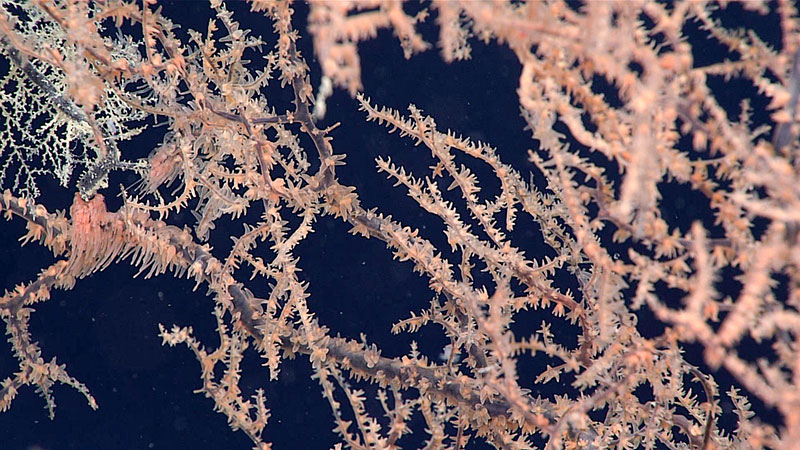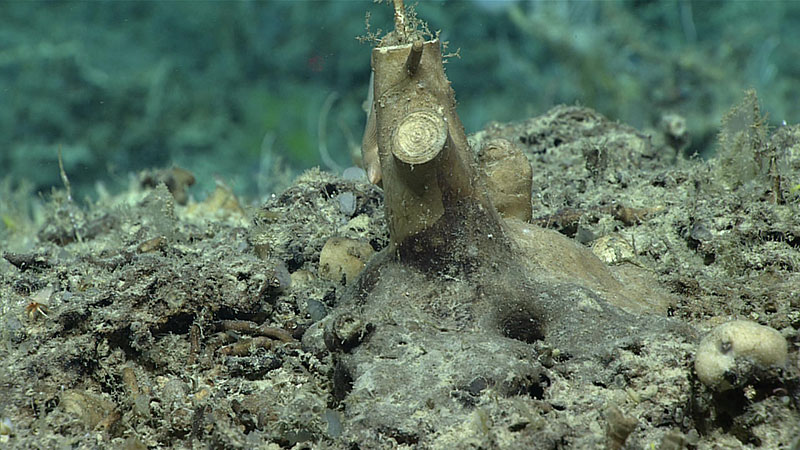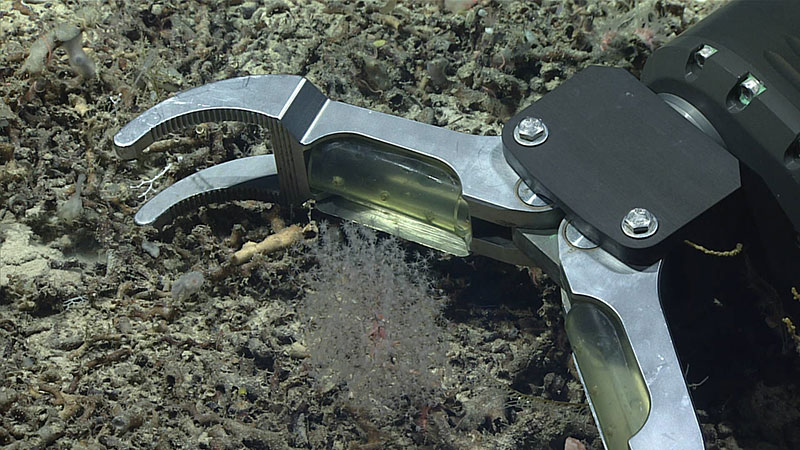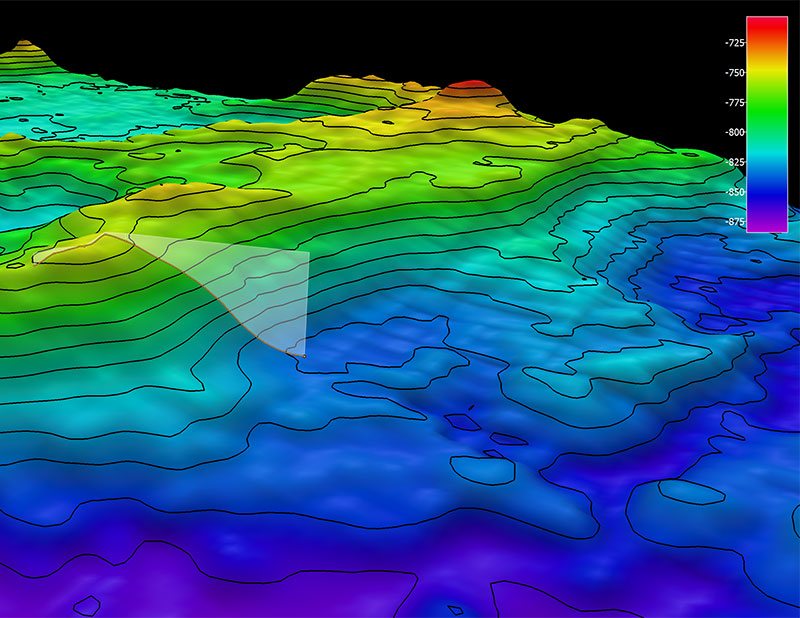
Date: June 27, 2019
Location: Lat: 30.43652578°, Lon: -79.58192093°
Dive Depth Range: 750 - 841 meters (2,461 - 2,759 feet)
Midwater Transect Depths: 700, 500, and 300 meters (2,297; 1,640; and 984 feet)
Access Dive Summary and ROV Data
This midwater squid (genus Megalocranchia) was successfully collected during Dive 06 using the newly installed suction sampler on the remotely operated vehicle (ROV) Deep Discoverer. Windows to the Deep 2019 is the first expedition that we've had the suction sampler and it allows the team to collect more delicate samples that could potentially be damaged using the ROV's manipulator arm. Video courtesy of the NOAA Office of Ocean Exploration and Research, Windows to the Deep 2019. Download larger version (mp4, 108.6 MB).
Our sixth dive of the Windows to the Deep 2019 expedition took place approximately 100 miles off the coast of Florida within the Blake Plateau region at the Stetson Mesa Seep site. This site was identified as a potential cold seep that was originally mapped by NOAA Ship Okeanos Explorer during 2014. An anomaly in the high-resolution water column data was identified by Dr. Adam Skarke’s lab at Mississippi State University indicating that this might be a cold seep site. The prior mapping data revealed ridge features, with potential seeps hosted at the top of the ridge. After the benthic portion of the dive, we conducted several midwater surveys in the area to observe and collect biota in the vastly unexplored water column.

This black coral was imaged during Dive 06 of the Windows to the Deep 2019 expedition around 749 meters (2,457 feet). Image courtesy of the NOAA Office of Ocean Exploration and Research, Windows to the Deep 2019. Download larger version (jpg, 1.6 MB).
The remotely operated vehicle (ROV) Deep Discoverer started at the base of the ridge, and as soon as ROV touched down, we observed a squid of the genus Megalocranchia. The team used the suction sampler to make a collection. After the collection, the ROV moved up the slope looking for potential seeps, but no seeps were seen throughout the duration of the dive. The area contained coral rubble that persisted throughout the dive and fostered a high diversity of benthic fauna including octocorals, black corals, a number of echinoderms, and fish, and we again observed several chimaera. A rock sample was collected with possible encrusting manganese iron oxide, a commercially valuable deep-sea mineral deposit.
Further along in the dive, we came across the base of a bamboo coral, which appeared to have been “sheared off,” revealing the inside rings of the coral. Similar to a tree, bamboo corals have growth rings, and the age of the coral can be determined from counting these rings. Towards the end of the benthic portion of the dive, the mysterious brittle star observed on Dive 05 was spotted and collected as, according to the shore-based science team, this brittle star is potentially a new species.

The base of a bamboo coral, revealing the growth rings within the carbonate base. Similar to a tree, the age of the coral can be determined from the growth rings. Paleoceanographers can use these rings to learn more about past ocean and climate conditions. Image courtesy of the NOAA Office of Ocean Exploration and Research, Windows to the Deep 2019. Download larger version (jpg, 1.2 MB).

During Dive 06, we collected the unidentified brittle star with the reddish-purple, swollen, central disk that was first observed on Dive 05 of the Windows to the Deep 2019 expedition. Image courtesy of the NOAA Office of Ocean Exploration and Research, Windows to the Deep 2019. Download larger version (jpg, 2.0 MB).
The water column portion of the dive took place at three depths: 700 meters (2,297 feet), 500 meters (1,640 feet), and 300 meters (984 feet). The transects lasted about 20 minutes at each depth. During the water column portion, we made one collection of a jellyfish around 697 meters (2,287 feet). The 500-meter transect, within the deep scattering layer, seemed to be mostly made up of many small fish, while we observed more gelatinous animals during the deeper transects.

Location of Dive 06 on June 27, 2019. Download larger version (jpg, 2.2 MB).

The remotely operated vehicle track for Dive 06, shown as an orange line with a white curtain. Scale is water depth in meters. Download larger version (jpg, 3.1 MB).